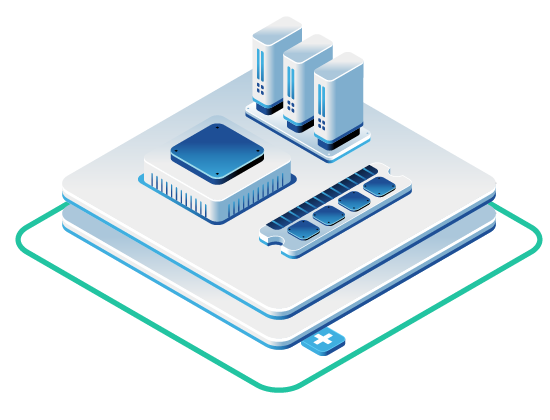AI startups hit sticker shock when Pinecone bills jump from $50 to $3,000/month. This analysis reveals the exact tipping point where self-hosting vector databases on OpenMetal becomes cheaper than SaaS. Includes cost comparisons, migration guides for Qdrant/Weaviate/Milvus, and real ROI timelines.
Category: AI and ML
Overcome the trust barrier in enterprise AI. This guide details how to deploy vector databases within Intel TDX Trust Domains on OpenMetal. Learn how Gen 5 hardware isolation and private networking allow you to run RAG pipelines on sensitive data while keeping it inaccessible to the provider.
The 2018 Spectre, Meltdown, and Foreshadow vulnerabilities exposed fundamental CPU flaws that shattered assumptions about hardware isolation. Learn how these attacks sparked the confidential computing revolution and how OpenMetal enables Intel TDX on enterprise bare metal infrastructure.
Generative AI and AI workloads are reshaping cloud infrastructure demands. Public cloud limitations around GPU availability, egress costs, and shared resources are driving enterprises toward private cloud solutions. Learn how OpenMetal’s hosted private cloud delivers dedicated GPU resources, transparent pricing, and hybrid flexibility for AI success.
Real-time AI applications require consistent sub-100ms performance that multi-tenant cloud GPU instances can’t deliver. Explore how dedicated bare-metal H100/H200 clusters eliminate noisy neighbor effects, provide predictable pricing, and deliver the performance consistency needed for production inference systems.
Healthcare organizations can now train AI models on sensitive patient data without exposing it to public cloud vulnerabilities. Confidential computing creates hardware-protected environments where PHI remains secure during processing, enabling breakthrough AI development while maintaining HIPAA compliance and reducing regulatory overhead.
Discover how Intel TDX performs on bare metal infrastructure with detailed benchmarks for blockchain validators and AI workloads. Learn optimization strategies for confidential computing on OpenMetal’s v4 servers with 20 Gbps networking and GPU passthrough capabilities.
Discover how OpenMetal’s on-demand private cloud with integrated Ceph storage eliminates AI infrastructure bottlenecks. Real customer case study shows 50% cost reduction and seamless scaling from 0.5PB to 1.9PB capacity. Get enterprise-grade performance with predictable pricing.
Learn how confidential computing infrastructure secures AI training, blockchain validators, and SaaS customer data using hardware-based Trusted Execution Environments. Discover OpenMetal’s approach to practical deployment without operational complexity.
AI-driven smart contracts require dedicated infrastructure to handle real-time inference, protect sensitive data, and maintain blockchain consistency. Shared cloud environments introduce performance variability and security risks that compromise both AI accuracy and blockchain reliability.
Retail brands face a dilemma: AI image generation tools offer unprecedented speed, but public APIs expose intellectual property, violate compliance, and create unpredictable costs. Private AI infrastructure solves these challenges while delivering superior ROI.
Tired of slow model training and unpredictable cloud costs? Learn how to build a powerful, cost-effective MLOps platform from scratch with OpenMetal’s hosted private and bare metal cloud solutions. This comprehensive guide provides the blueprint for taking control of your entire machine learning lifecycle.
Learn how media companies can deploy OpenAI Whisper on a private GPU cloud for large-scale, real-time transcription, automated multilingual subtitling, and searchable archives. Ensure full data sovereignty, predictable costs, and enterprise-grade security for all your content workflows.
Discover how IT teams can deploy BioGPT on OpenMetal’s dedicated NVIDIA GPU servers within a private cloud powered by OpenStack. Learn strategic best practices for compliance-ready setups (HIPAA, GDPR), high-performance inference, cost transparency, and in-house model fine-tuning for biomedical research.
Explore how MicroVMs deliver fast, secure, and resource-efficient horizontal scaling for modern workloads like serverless platforms, high-concurrency APIs, and AI inference. Discover how OpenMetal’s high-performance private cloud and bare metal infrastructure supports scalable MicroVM deployments.
Learn how to enable Intel SGX and TDX on OpenMetal’s Medium, Large, XL, and XXL v4 servers. This guide covers required memory configurations (8 DIMMs per CPU and 1TB RAM), hardware prerequisites, and a detailed cost comparison for provisioning SGX/TDX-ready infrastructure.
A quick list of some of the most popular Hugging Face models / domain types that could benefit from being hosted on private AI infrastructure.
Discover how cloud resellers can offer scalable on-demand GPU services for AI/ML by leveraging OpenMetal’s Private GPU Servers. Learn about GPU time-slicing, MIG, virtualization strategies, and industry trends driving growth—plus key business benefits and real-world use cases.
Many AI startups default to public cloud and face soaring costs, performance issues, and compliance risks. This article explores how private AI infrastructure delivers predictable pricing, dedicated resources, and better business outcomes—setting you up for success.
In a recent live webinar, OpenMetal’s Todd Robinson sat down with Emrul Islam from Kasm Technologies to explore how container-based Virtual Desktop Infrastructure (VDI) and infrastructure flexibility can empower teams tackling everything from machine learning research to high-security operations.
With the new OpenMetal Private AI Labs program, you can access private GPU servers and clusters tailored for your AI projects. By joining, you’ll receive up to $50,000 in usage credits to test, build, and scale your AI workloads.
GPU Servers and Clusters are now available on OpenMetal—giving you dedicated access to enterprise-grade NVIDIA A100 and H100 GPUs on fully private, high-performance infrastructure.
Cold start latency becomes a visible and impactful factor in private environments and can slow down AI inference, especially when infrastructure is deployed on-demand to optimize resource usage or reduce costs. Learn causes, impacts, and how to reduce delay for faster, reliable performance.
Intel Advanced Matrix Extensions (AMX) is an instruction set designed to improve AI inference performance on CPUs. It enhances the execution of matrix multiplication operations—a core component of many deep learning workloads—directly on Intel Xeon processors. AMX is part of Intel’s broader move to make CPUs more viable for AI inference by introducing architectural accelerations that can significantly improve throughput without relying on GPUs.
Modern GPU technologies offer multiple methods for sharing hardware resources across workloads. Two widely used approaches are Multi-Instance GPU (MIG) and time-slicing. Both methods aim to improve utilization and reduce costs, but they differ significantly in implementation, performance, and isolation.
When comparing GPU costs between providers, the price of the GPU alone does not reflect the total cost or value of the service. The architecture of the deployment, access levels, support for GPU features, and billing models significantly affect long-term expenses and usability.
As demand for AI and machine learning infrastructure accelerates, hardware decisions increasingly affect both model performance and operational costs. The NVIDIA A100 and H100 are two of the most widely adopted GPUs for large-scale AI workloads. While both support advanced features like Multi-Instance GPU (MIG), they differ significantly in performance, architecture, and use case suitability.
The demand for GPU compute resources has expanded alongside the growth of AI and machine learning workloads. Users today have multiple pathways to access these resources depending on their requirements for cost, control, and performance. This article breaks down three common tiers of AI compute services, their advantages, and trade-offs.
Explore real-world solutions to AI deployment challenges—from managing secure, container-based environments to scaling GPU infrastructure efficiently. Learn how Kasm Workspaces and OpenMetal enable secure collaboration, cost control, and streamlined experimentation for AI teams.
Accurately measuring AI model performance requires a focus on tokens per second, specifically output generation rates. Understanding tokenization, model size, quantization, and inference tool selection is essential for comparing hardware and software environments.
This article highlights OpenMetal’s perspective on AI infrastructure, as shared by Todd Robinson at OpenInfra Days 2025. It explores how OpenInfra, particularly OpenStack, enables scalable, cost-efficient AI workloads while avoiding hyperscaler lock-in.
At OpenMetal, you can deploy AI models on your own infrastructure, balancing CPU vs. GPU inference for cost and performance, and maintaining full control over data privacy.
10 essential AI tools WordPress agencies can explore to streamline workflows, enhance customer operations, and stay competitive.
This article offers insights as to how WordPress agencies can gain a competitive edge by embracing AI innovation.
Learn about the need for confidential computing, its benefits, and some top industries benefiting from this technology.
The bare metal cloud market is poised for significant growth in the coming years, fueled by the rapid advancements in artificial intelligence (AI) and machine learning (ML), as well as the increasing demand for high-performance computing (HPC).
High performance computing refers to the use of powerful computers and parallel processing techniques to solve complex computational problems. HPC is typically used for tasks that can include: running larging-scale simulations, financial models, big data analytics and AI which require considerable processing power, memory and storage. Private OpenStack clouds offer several key features such as scalability, flexibility, integration and cost-efficiency that make them suitable to for running HPC workloads.
ELIZA (created by Joseph Weizenbaum) was one of the first natural language processing programs designed to simulate conversation. But it wasn’t until nearly 50 years later that AI tools like Siri allowed broad adoption so that many users could use natural language to interact with their devices. And while Siri had its time, never before have we had this many significant consecutive releases (ChatGPT, Gemini, Alexa) that transformed our daily lives. AI now plays a pivotal role in our daily lives, answering our questions, articulating and documenting our ideas in written and even artistic forms, driving our vehicles, cooking our food, analyzing our patterns, and recommending ads to us, etc. So what do you need to know about AI? And where do you begin if you want to leverage the endless possibilities of AI for your organization?
Nvidia is adapting to both AI and improvements needed in data center GPUs for non-AI work. View a comparison of their GPUs here.
When it comes to raw performance metrics, GPUs often lead the pack. Their architecture is specifically tailored for the high-speed, parallel processing demands of AI tasks. However, this doesn’t always translate into a one-size-fits-all solution.
In this article, we’ll explore scenarios where CPUs might not only compete but potentially gain an upper hand, focusing on cost, efficiency, and application-specific performance.
Artificial Intelligence (AI) and Machine Learning (ML) have been prominent topics within the technology landscape for an extended period. However, the emergence of AI such as OpenAI’s GPT-3 and Google Bard has elevated the excitement surrounding these advancements. GPT-3 stands as a language model capable of generating remarkably human-like text, garnering significant attention as a transformative force in the AI realm. Yet, how do these AI and ML technologies integrate with the realm of cloud computing? Moreover, what role do open-source cloud platforms like OpenStack play in propelling the progress of such sophisticated technologies?
OpenStack is a powerful cloud computing platform that is backed by a vast community of developers who continuously update and improve the software. In this blog, we will discuss OpenStack projects and open source software that can be used to create a cloud environment that’s ideal for building, testing, and managing AI.


































